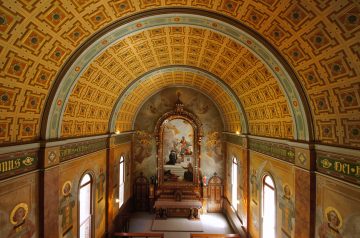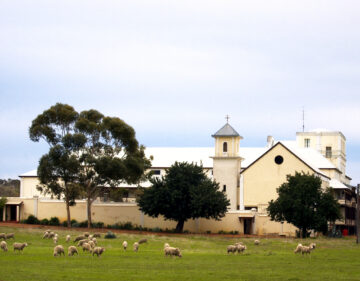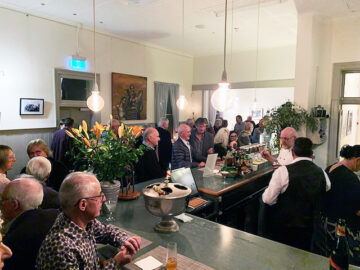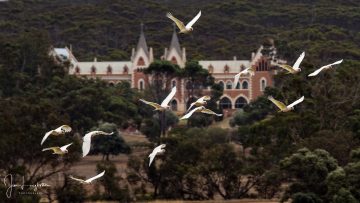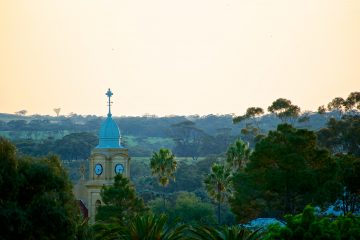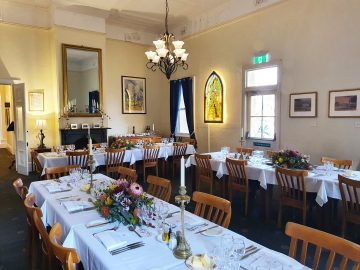Wednesday, 8th November 2023
Who was Peter Lewis?
Since at least 1995 there have been regular, recurring requests to the archives for information on “Peter Lewis”. He has been described as a monk, an alter ego for Fr Francisco Salvadó, as a relative of Bishop Salvado’s and as a workman at New Norcia. Adding to the confusion is that Peter apparently anglicised his name from Pedro Luigi Salvado or something similar. My predecessor, Wendy McKinley, tried valiantly to find out who he was and, in an email to one researcher in early 2007, she wrote “If you find the real story I would love to know it”. The response to that from her correspondent was “I somehow doubt we will ever know the truth about Peter Lewis”.
Sixteen years later the situation has not changed. So what records do New Norcia’s archives hold that might relate to him. The first place to look is the Libro de expediciones para la misión de Nueva Nursia; this is the register of monks which is added to chronologically as monks enter New Norcia and it goes right back to the very beginning with Bishops Salvado and Serra. Information included in this register comprises details of where the monk came from, who his parents were, dates of profession, entry to New Norcia and date of death. Unfortunately, Peter Lewis or Pedro Luigi Salvado (or anything similar) does not appear which would suggest quite conclusively that he was not a monk.
There are thirty-eight references to “Lewis” on the archives database but nothing for a Peter Lewis. Another source of information, then, is in the correspondence. There are approximately 20,000 items of correspondence in the archives, all of which (during the Salvado years, 1846-1901) have been summarised in English by eminent scholars and linguists over many years, so we now have a searchable collection of thousands of letters. However, a search for “peter” and “lewis” brought up nothing in the correspondence up to 1859, whilst the same search for “pedro” brought up several instances of letters from Salvado’s brother, Pedro Pablo Salvado, but not Luigi.
From the archives’ point of view, there are, then, no references to a monk called Peter Lewis. But what of the other claims, for example that he was, in actual fact, Fr Francisco Salvadó (note the accent on the final “o” – something that is absent from Bishop Salvado’s name and which is important as, for Spanish speakers, this represents two entirely different names). The Libro de expediciones states that Fr Francisco’s parents were Pablo [Salvadó] and Teresa Clos, that he was born in Castellon de Seano in the Diocese of Solsona (Spain) on 30 July 1823, he arrived on the John Panter in 1853 and was a student when he entered New Norcia the same year; he was ordained on 7th October 1855 and left the mission in 1857 to be the parish priest in Toodyay and York. In 1864 he went to Ceylon where he spent between three and four years working with the mainly Italian Sylvestrine Benedictines. In a letter written on 12 March 1884, Salvadó wrote that, after returning to Spain from Ceylon, he spent some years in parish work in Barcelona before joining the Claretians in 1874 at which time they were in exile in France.
The BDWA also lists Peter Lewis, but as having been born fourteen years later than Francisco in Portugal in 1837, that he too arrived on the John Panter (although he doesn’t appear as such in the passenger list), he married Ellen Batt in 1863 and went on to have twelve children, the last of whom was born in 1884.
Most recently, a new angle has surfaced, namely that Peter Lewis was the illegitimate son of Bishop Salvado. George Russo in his book Lord Abbot of the Wilderness (Melbourne: Polding Press, 1980) does allude to a possible dalliance when Salvado was still a young man. Russo writes quoting from Rodriguez’ work Un Gallego, Civilizador de Australia (Madrid, 1946, page 6):
“At this period Rosendo apparently suffered from a divided soul. It seems that he fell in love and determined to solve the conflict by applying rather hastily for orders. The bishop refused to ordain him because of an alleged relationship with a woman. No more than this can be said.”
Certainly, there is nothing in the archives that can substantiate or even refute the statement. As far as can be determined though, this is the only reference to the possibility that Peter Lewis might have been an off-spring, but it is a very vague statement about an alleged relationship about which, as Rodriguez writes, nothing more can be said and, I would add, inferred.
That brings us to the last possibility - that Peter Lewis was an employee of the mission. According to the BDWA, Peter Lewis was a gardener in Pinjarra and Serpentine. Whilst there was no Peter employed at New Norcia, there was however a John Lewis who, in September 1856, signed on as a shepherd. Could he have been the inspiration for the Peter Lewis of later years?
In conclusion, I think I have demonstrated that Peter Lewis is a very shadowy figure where New Norcia is concerned and I think I have shown that there are no monastery records relating to him. My feeling is that Peter was the Peter as described in the BDWA but that the regrettable, and now proven to be incorrect, link to Francisco Salvadó was the genesis of the excitement that Peter Lewis was somehow connected with the monastery. But, despite that and as that researcher said in 2007, I “somehow doubt we will ever know the truth about Peter Lewis”.
Peter Hocking
Archivist
